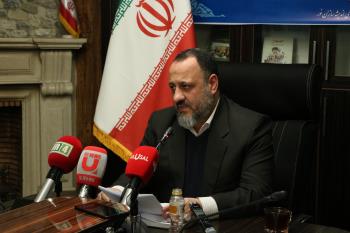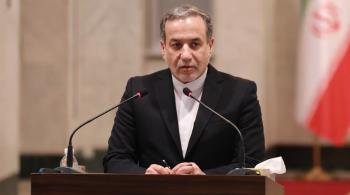Alwaght- The young Saudi Crown Prince Mohammed bin Salman allegedly has been leading a campaign of reforms inside the Arab kingdom since 2016. The starting point was the Saudi Vision 2030, unveiled in late April 2016 that aimed at cutting the nation’s reliance on oil and diversifying its sources of income.
A couple of months later, the 33-year-old King-in-waiting also introduced series of social reforms to the society, with women, youths, and religion being high on his agenda. In the past few months, Mohammad bin Salman (MbS) removed some hurdles in place for decades ahead of the women’s social participation. The young generation also found favor with the prince who eased the restrictions on the youths and made them find him a reformer.
There are, however, various analyses about the reformation campaign and its prospects. Some experts still argue that the social changes led by MbS are show moves meant to win the public's approval to ascend the throne even before death of his father King Salman bin Abdulaziz's. The arrangements have so far found favor with the young generations of the country, which has over 70 percent of its population below 30 years old.
However, bin Salman's religious amendment is of greater significance in comparison to the other so-called reforms. MbS repeatedly said that he intended to allow a moderate version of Islam dominate the nation. Commenting on the way of viewing the reforms by the home Islamists, bin Salman claimed that Islam is a compromising religion and that it will be in good terms with his measures.
Al Saud's degree of adherence to Islam
An exploration of the ruling family’s history makes it clear that it has never been committed to the Islamic instructions. The faith had mainly been used instrumentally to serve the interests of the ruling elites. Al Saud rulers have often, either through titles or rhetoric, boasted of being servers to Islam and implementers of the Islamic rulers, or sharia, but their behavior and policies across the Muslim world betray their hypocrisy. In the 1940s, for example, King Abdulaziz, founder of Saudi regime, negotiated with the Americans the foundation of the Israeli regime in the occupied Palestinian territories. He even was somehow for the foundation of a Jewish state. In next decades, the kingdom’s policies distanced from Islam. And now Riyadh is closer than any other time to Tel Aviv. The family’s hostility to the Muslim world dates back to the early 19th century, when Abdulaziz bin Muhammad, the ruler of the First Saudi State, invaded Iraq’s holy Shiite city of Karbala with his 12,000 Wahhabi soldiers, killing about 4,000 Shiite Muslims and ruining and looting the holy shrine of Imam Hussein, the grandson of Prophet Muhammad.
Nicolas Kristof, an American journalist, in 2016 in an article published by the New York Times shed light on the Saudi Arabian role in the spread of chaos and tarnishing the image of Islam across the world while the incumbent President Barack Obama was on a visit to the oil-rich kingdom.
“I’m glad that President Obama is visiting Saudi Arabia, for engagement usually works better than isolation. But let’s not let diplomatic niceties keep us from pointing to the insidious role that Saudi Arabia plays in sowing instability, and, for that matter, in tarnishing the image of Islam worldwide. The truth is that Saudi leaders do far more to damage Islam than Trump or Cruz can do, and we should be as ready to denounce their bigotry as Trump’s,” he said in his NYT article titled “Obama in Saudi Arabia, Exporter of Oil and Bigotry.
All these issues provide us with scales with which the Saudi rulers' degree of commitment to Islam can be put to test. So, in the present conditions, the young prince’s claims of returning to the genuine Islam via reforms should not be taken so seriously. But his measures in relation to the religion make some long-term consequences unavoidable.
Challenges ahead
During its political life, Al Saud has often witnessed periods of challenges hitting the political and religious apparatuses' relations, with the political apparatus always coming out as a winner. At the beginning of his state-building process, King Abdulaziz used the Wahhabi muftis and scholars. The company of Al ash-Sheikh, an effective family in charge of the religious apparatus, with the king was key to getting on board other Hijaz and Najd tribes. In fact, the King Abdulaziz owes much of his success in dominating the two major Arabian Peninsula regions to the assistance from the Wahhabism.
However, after the kingdom was fully established, in 1932, the Muslim Brotherhood revolted against ibn Saud. Abdulaziz also admitted that he cannot continue to rule the country with the teachings of the Wahhabism and accepted to show some flexibility and embrace many of the modern-era symbols, something that sparked a severe reaction of the Wahhabi clergy. But the ruler was the successful side of a fierce race of powerful Saudi poles. There are claims that Abdulaziz even had noses of 30 of the Wahhabi clerics cut off. This incident spawned a period of confrontation of the clergy and the political elites.
The encounter continued in the ensuing decades. In November 1979, Juhayman al-Otaibi, a Saudi religious extremist, attacked Mecca with 300 of his military assistants and seized the holy city’s holy mosque for 22 days. Only with the help of a French special force did the Al Saud leaders manage to put down the rebellion and restore Kaaba. Since then, the leader put some limits on civil liberties and instead offered the Wahhabi clergy greater powers in the state.
One of the drives behind Mecca rebellion was to fight the tracks of Western culture and traditions and replace them with Islamic values. Juhayman himself was a leader in the Islamist Muslim Brotherhood who played a major role in helping Abdulaziz making it to the rule. This very well lays bare the fact that whenever Al Saud intend to restrict the Wahhabi circles, it should expect challenges and even escalation of tensions.
However, it should be taken into consideration that today’s Wahhabism is very different from that of eight decades ago. Now, there is a state-dominated and softened version of Wahhabi apparatus. Additionally, the Wahhabi clergy know it well that any show of oppugnancy to the ruling structure could cost them dearly. Therefore, they appear to be inclined to embark on a compromising policy in dealing with the MbS-led reforms. But this, the analysts assert, does not mean that the Wahhabi clergy will officially recognize the king-in-waiting's amendment of the deeply established rules. Odds are that they will seek setting up obstacles ahead of the reformatory measures in the long run.
Still, from another perspective, bin Salman is pressing forward with his change of the social and cultural structures of the nation while the entrenched traditions are presenting the key barriers ahead of him. This means that the prince’s reforms campaign in the society will not go unchallenged, and he should come up with fronts opposing his measures in the long term.



























